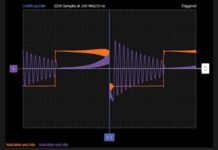Abstract
Using a window voltage supervisor gives better regulation of the system power supply by preventing undervoltage and overvoltage scenarios. A stable system supply protects the systems or loads from potential malfunction or, worse, being damaged. Different window voltage supervisor architectures provide options for tolerance, undervoltage and overvoltage threshold setting, and output con- figuration, creating design flexibility depending on the application. This article aims to help engineers and system designers identify the most suitable window voltage supervisor for their application using different architecture examples.
Introuction
Sudden fluctuations in voltages may cause severe problems in areas like automotive, industrial, or home appliances. This system power supply issue can be due to voltage spikes, poor or inconsistent flow of electricity, lightning strikes, flickering, etc.
Using a window voltage supervisor helps prevent malfunctions in the system as it detects a certain range of voltage regardless of whether it is under or over the range of voltage and provides an output signal that can be utilized in executing protective mechanisms. Window voltage supervisors are available with different architectures and features, and a better understanding of each type is necessary to arrive at an optimum system design. Options range from a resistor-programmable undervoltage (UV) and overvoltage (OV) trip, a fixed or factory-trimmed UV/OV threshold, multichan- nel for monitoring several voltages, or with single UV/OV or independent UV and OV output selection.
Understanding Window Voltage Supervisors
A window voltage supervisor circuit is similar to the conventional window detec- tor circuit that uses two comparators and each of the comparators detects a common input voltage against its reference voltages, which are the upper limit and the lower limit. The output shows the detection from the input in the form of a window between the two reference threshold voltages. Simply, it does not only detect under the threshold voltages but also over the threshold volt- ages. Figure 1 shows the conventional circuit and the waveform of a window detector circuit.
In this circuit, when VIN is greater than the lower limit, the output from U2 will be in a high state from a low state. In contrast with U1, when VIN becomes greater than the upper limit, the output will be in a low state from a high state. Therefore, if VIN is greater than the lower limit and lower than the upper limit, then both compara- tor’s outputs will swing to the high state and turn on the AND gate output.
For a window voltage supervisor, each comparator shares a common reference voltage. It also provides a defined margin of supply tolerances, threshold hys- teresis, and threshold accuracy specifications. The tolerance is a value often expressed in percentage used to determine the undervoltage and overvoltage threshold window with respect to the nominal voltage. Hysteresis ensures a reliable reset operation and prevents a false reset output even in the presence of supply noise or erroneous signals. The accuracy gives the allowable range of undervoltage and overvoltage thresholds.
Read the full article here

















